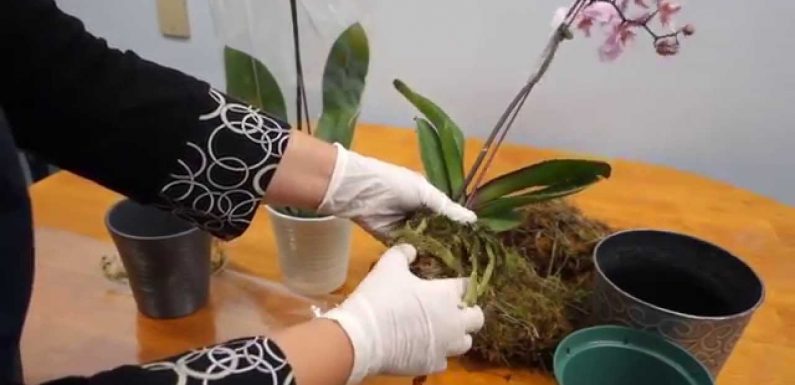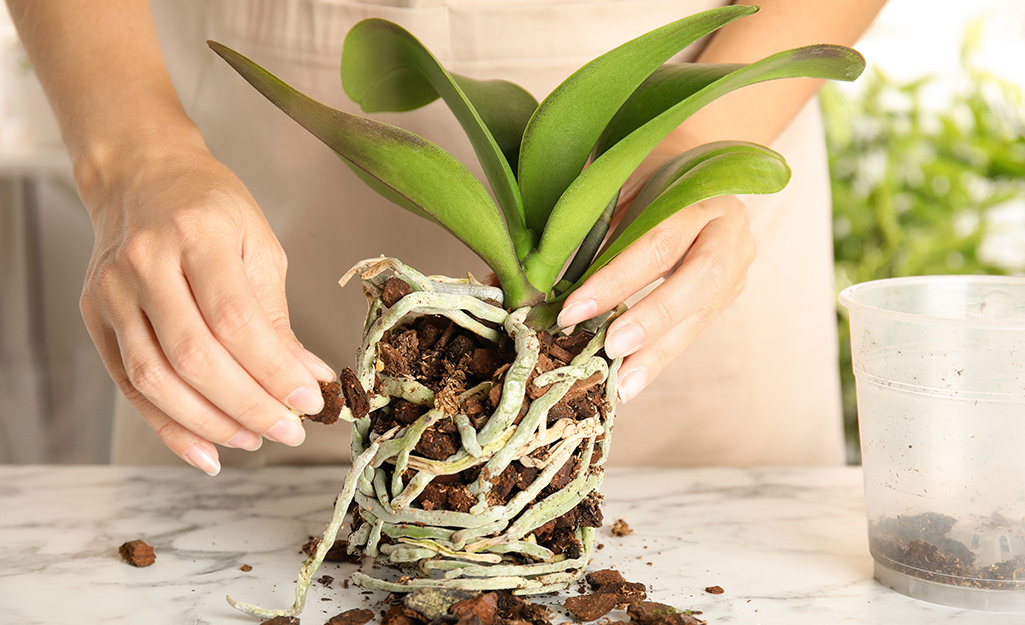
Despite needing different care depending on the type, all plants require basic care to grow and maintain good health. Those who have plants at home should take it as a responsibility. In a short time, they will deteriorate and enter a critical situation, even dying. Sometimes it is inevitable that the plant dies. In others, it is possible to act in time, so it is important to know some ways to recover it because. Luckily, most plants can recover if you act quickly and correctly.
In the case of orchids, which are one of the most common flowering plants in homes. At the same time, they can be somewhat delicate to care for if we do not know their needs very well. They can suffer a variety of conditions, dry out due to lack of water or too much sunlight, drowning because we spend watering them, run out of leaves, have pests or diseases, etc. If this is your case and your orchid is dying, we recommend that you continue reading this article to discover how to revive an orchid and what to do according to its situation.
How to revive an orchid?
Recovering a dry orchid is possible without any problems unless it is almost completely dry and for a long time. In which case it will be much more difficult to achieve it. However, it will not always be impossible. Take note of these tips on how to revive a dried orchid:

- Start by removing the leaves and sticks (stems) that you see are completely dry.
- You should bear in mind that this plant needs watering once a week when the weather is mild and without heavy rains, giving it time for the water to drain completely between watering and watering. If you do not comply with this frequency. You may end up drying out, especially in the warmer months of the year.
- If the orchid has entered this critical situation, you have to water it urgently. Make sure that all the substrate is wet and that you see all its green roots, instead of white because that is when they are dry. Let it drain as needed before putting your pot back in the stand or decorative pot. This will prevent water from being trapped and the roots from puddling.
- Once you have watered the orchid, recreate the environment it needs. That is, it provides moisture to the plant by spraying water on its leaves. In this way, it will be in much more favorable environmental conditions and the leaves will be able to do the photosynthesis process more easily. Of course, do not pour water on its leaves if it is in direct sunlight. Better do it in a shady area or inside the house and wait for them to dry to put it back in a sunny area, either on the window. If the sun hits the wet leaves, they will burn.
How to revive an orchid with dried roots?
If the plant has dry roots, it can be recovered using the bag and sphagnum technique. It is a trick in which, on the one hand, wet sphagnum moss is used to provide moisture to the plant and, on the other hand, a plastic bag is used to create a greenhouse effect, thus creating a sustained elevated humid environment. This method is also effective if your question is how to recover an orchid with almost no roots and these are drying out. This deep treatment is a good start to help the plant get ahead and help it generate more roots. Follow these steps to recover an orchid with dry roots with this method:

- Remove the remains of the substrate stuck to the dry roots of the plant.
- Use sanitized pruning shears to cut off the driest roots, those that are dead, that will look like wood, or will be dark.
- Prepare a basin with warm water, add orchid rooting (growth hormones), and avoid fertilizers in this process.
- Soak the plant in the water and rooting mix for an hour.
- Meanwhile, take a larger plastic bag than the plant, which is clear (this is important so you can see its progress) and place the water-soaked sphagnum moss in one corner of the bag.
- Take the plant out of the water and put some fungicide on the root zone.
- Put the plant in the bag so that the roots are in the other corner of the bag and are not in direct contact with the moss.
- Completely close the bag with the plant inside, being careful not to crush it, and put a clamp to ensure that it closes well.
- Put the mini greenhouse that you have created in a warm place in your home that is well lit, but not in direct contact with direct sunlight.
- Wait a few weeks and when the plant has some new roots of about 2 or 3 centimeters, you can transplant it. During this time, you will have to observe its growth without opening the bag to make sure that it is going well because if, for example, you notice that white spots appear, it is that fungi have appeared and some part of the process has not been done correctly. In this case, you will have to open the bag to add more fungicide.
How to revive a withered or drowned orchid?
Recovering a rotten orchid from excess water, poor drainage, and poor root ventilation is a challenge for any garden enthusiast.

- Remove the orchid from the pot, taking special care with the roots.
- If it has flower rods (lateral stems) and being rotten or drowned, it is most likely that it no longer has any flowers, although it may form new ones. The convenient thing is to cut the rods because the health of the plant itself is compromised and in this state, it cannot expend energy to flourish. If it does, the main part of the plant will die. Therefore, with disinfected pruning shears, cut the flower poles to facilitate the withered orchid’s recovery. Put a little ground cinnamon in the cuts made on the sticks, as this helps heal the injury and prevent the fungus from entering this area.
- Also, cut all the roots that you see in very bad condition. They may be blackened or brown in color, with the outer part dry but with the center of the root (the main thread of the root inside) completely rotten. Leave only the ones you see in good condition, which are green or white.
- In a new pot or the same one but washed, disinfected and dried, place the orchid leaving inside the roots that, due to their shape, can enter well and leaving out those that do not, that is, we do not have to force them because if we do it, they will end up splitting; remember that orchids have aerial roots.
- With the plant well-positioned and centered, start putting new orchid substrate, that is, do not reuse the one that was there because it will have excess water accumulated and, indeed, fungi have thrived in it. This substrate should consist mainly of pine bark. Fill in the gaps to fill the entire pot and see that the plant holds.
- If the plant does not finish holding up well, you can place a stick as a support or guide, careful not to damage the roots.
- Put some moss or sphagnum on the surface in the pieces where there are roots.
- As we have already eliminated the parts that had excess water and were rotten, we will have to help vitalize the plant. Spray the leaves with a little water with a refreshing foliar product, especially on the underside (bottom part).
- Place the orchid in a bright location without direct contact with the sun’s rays, at least not until it is healthier.
- Start watering the plant normally after a day or two, when you see for sure that it no longer has parted with too much-retained water.
How to revive a leafless orchid?
When we neglect an orchid, it can lose its leaves or most of them, which indicates its poor state of health. To know what to do in this situation and how to revive a leafless orchid step by step, follow these instructions:

Remove any flower poles or lateral stems that are badly damaged or that you know have already had a flower, as they will not have more and are an unnecessary waste of energy for the plant during all the time it takes to dry and fall. Keep only those that are newer, have not yet flowered, and are in good condition. Likewise, if you keep any loose leaf in good condition, leave it, but if you see that it has some in poor condition, cut it out.
Place the orchid in a bright space to promote its growth. If you have it indoors and you place it on a window, leave at least a foot distance to prevent the sun from burning it with the effect of glass. Spray the plant with water daily, thus increasing the humidity in the environment. To accelerate the recovery of the orchid, you can spray it with an invigorating foliar special for this plant. In this way, new stems will be generated and the health of the orchid will be reactivated. If you have any floral sticks or leaves, even a small one, take the opportunity to use this product precisely in these parts, which is where it works best.
Finally, add a little specific fertilizer for orchids in the substrate and try to have an adequate pattern in your waterings and that the drainage is good. Little by little, it will recover and you will see that new leaves come out.

